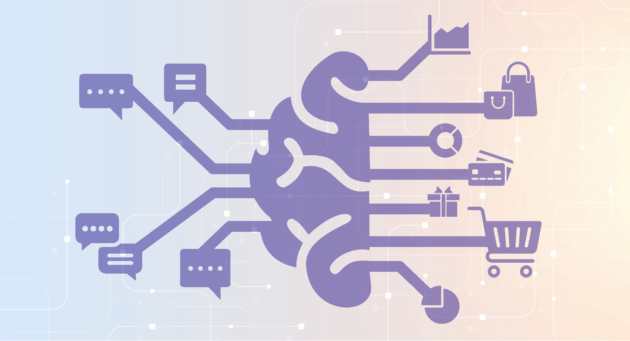Advanced AI is revolutionizing the use of first-party data in advertising. Until now, data inferences have relied heavily on deterministic connections between first and third-party sources and required clumsy linking of multiple data sources.
Today, Criteo’s use of advanced AI models like deep KNN is changing the game by enabling more sophisticated inferences from large, complex and often unlinked datasets. It’s these models that help us activate data across our network of 225 retailers, 2,700 brands and 18,000 direct to consumer sellers, enabling each to have a better conversation with commerce-minded consumers.
In traditional data analysis, deterministic tabular data was key to making direct connections and specific personalization, often requiring consumer consent. Now, advanced AI models can infer insights across various first-party data types, including offline and online behavioral data, in-store environments, and product catalogs. This shift allows us to understand better than ever how products are discovered, compared, and purchased together, providing a deeper understanding of consumer behavior.
When I started in adtech, making such connections was impractical due to limited computational power and less advanced models. Updating models was time-consuming and cumbersome and often introduced bias to their outputs. Today, with the advent of advanced AI and wildly advanced computing power, we can process models more efficiently, making these complex analyses feasible and paving the way for the future of advertising.
In this new theatre of operation, first-party data remains crucial as training information for AI models, leading to stronger inferences even in data-scarce environments. This new way of deploying first-party data not only enhances the advertising experience but helps ensure consumer privacy well beyond consent.
At Criteo, our position in the ecosystem as operator of each of these datasets — which we collectively refer to as Commerce Data — allows us to leverage advanced AI uniquely and specifically towards commerce outcomes. Historically, our models relied on audience data, contextual data, ad performance data and product details to make consumer recommendations that drive these outcomes. Now, these elements are merging, with first-party identity still playing a critical but different role. This integration will lead to an incredibly valuable advertising ecosystem, far beyond what we currently see.
For example, we can create entirely pseudonymous audiences using deep learning embeddings trained on our universal catalog of more than 4,000 product categories and $2 billion daily online transactions across four billion product SKUs. We can then predict if a user, or group of users, are in Meta’s social platforms or other social environments while shopping for fashion apparel, or considering a vacation, or on a retailers’ site pondering items that that will make a dinner menu complete by mapping using that inference, rather than requiring a deterministic data match.
You know from having read my blogs prior that a significant trend our industry is focused on is the decline of third-party cookies and other trackers that bridge identity and other valuable data. It’s important to communicate that the methods we’ve used for years are giving way to the new AI-driven models I described. And it’s equally important to communicate that this transition is a gradual progression, rather than an overnight change. Preserving the vast marketplace we’ve built for today’s advertising means that we must balance leveraging current practices while developing those that aim for the near future. Criteo strives to manage this balance so our clients and partners can focus on their core business without worrying about these technological shifts.
Whether discussing first-party data, identity, commerce data, consumer behavior or privacy concerns, it’s essential we see the bigger picture. Each of these elements is crucial because together, they shape the future of advertising. We play a vital role in bridging today’s work with tomorrow’s innovations and are committed to supporting our clients through every step of this journey.
Visit our Addressability hub to find out more about how to leverage first-party commerce data and advanced AI for greater advertising impact at scale.
















